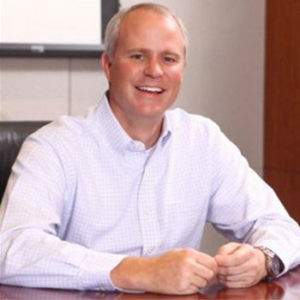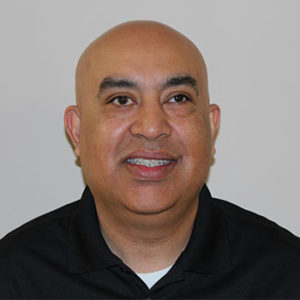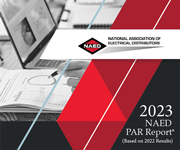By John Curran
The LED market has rapidly matured in a way not seen with other lighting products. It also holds great promise as a tool for manufacturers and end-users to take advantage of its benefits, including long lifetimes and consistent output, for applications well beyond outdoor and indoor lighting. We recently spoke with Kraig Kasler, Eaton Lighting Division President, and Fawaz Khalil, CEO of Halco Lighting about the challenges and opportunities provided by solid-state lighting at this still-early stage of adoption and usage.
Q&A with Eaton’s Kraig Kasler:

lightED: Has the explosion of the lighting market in recent years surpassed your expectations?
Kasler: The transformation of the lighting market has been even more significant than the explosion. Fixtures progressed from traditional light sources to LED, and are now starting to become central not only to delivering light, but also for gathering and analyzing data to provide non-traditional lighting benefits to end users. As connected lighting continues to expand, our industry is challenged to provide lighting solutions that enable customers to more easily reap the benefits of intelligent lighting.
lightED: What will be the key drivers in the US lighting market in the near-term (between now and 2020)?
Kasler: Energy code compliance, energy costs, financial incentives and new adoption will all be important drivers for the lighting market in the near term. Beyond these, we’re seeing a real spike in demand for connected buildings, communities and homes.
When you consider that the global market for buildings connected through the internet of things (IoT) is expected to exceed $75 billion by 2021, it’s clear that smart buildings are the future. More and more buildings are being equipped with intelligent sensory systems that yield deep insights into building operations and actionable data for building owners and managers.
At Eaton, we know that lighting is one of the fastest, most economical paths for deploying these connected solutions, not only in commercial buildings but communities and homes as well. Lighting fixtures are uniformly spaced throughout buildings, cities and homes—both inside and out—making them ideal locations for IoT sensors, which act as the sensory system of the building. Connected lighting systems will be the foundation of the next generation of smart buildings.
lightED: What does the future hold for light and connectivity?
Kasler: IoT technology presents nearly endless opportunities for light and connectivity. Without physical constraints of complicated wiring and separate sensor networks, buildings and infrastructure can be connected, helping building managers, city planners and homeowners understand how their space and energy is being used and apply data to improve efficiency, leveraging the real estate of the LED lighting fixtures.
The demand for LED lighting solutions has continued to accelerate, driven by stricter energy codes and regulations, end-user preference and continued LED price and performance improvements. An investment in LED systems is one with very attractive returns for commercial building owners and occupants alike.
We see connected lighting following a similar path, and as demand continues to rise we are driving technology improvements that will help reduce upfront costs and build unique solutions that meet the evolving needs of our customers.
lightED: How will distributors play a role in the future of lighting sales?
Kasler: Distributors have critical expertise of the local customer preferences and energy codes that shape the demand for lighting solutions in residential, commercial and industrial applications. With their knowledge, distributors are in a perfect position to support electrical contractors and designers in choosing the latest lighting and controls products that meet local electrical codes and satisfy customer demands.
As intelligent products continue to transform the lighting industry, distributors who take the time to develop their expertise in networked lighting systems will be well positioned to take advantage of the growing market. A key challenge for both manufacturers and distributors will be to communicate the capabilities of these connected solutions to end-user decision makers that place value on the benefits they deliver. In many cases, these end-user relationships are different from the contacts (ex: energy and maintenance teams) that we and contractors typically engage with today.
lightED: How can distributors build a stronger relationship with designers and contractors to use the best light in the correct situations?
Kasler: It all starts with understanding the current and future utilization of a building or site. Distributors who are well-versed in new and innovative designs—including controls and intelligent technologies, as well as the compatibility of the system with the control intent—will be able to provide critical collaboration with designers and contractors to help meet their customers’ needs.
lightED: How will price impact the future of lighting?
Kasler: Demand for connected lighting solutions is increasing as the benefits of intelligent buildings—from energy savings to productivity improvements—are realized. As demand continues to grow, the technology becomes more sophisticated, easier to use and customize, and the total cost to buy and install these systems will come down.
lightED: What do you think the capabilities of light may one day become?
Kasler: With lighting systems as the backbone of connected buildings, communities and homes, the future capabilities are massive. Describing a world where everything is connected is akin to describing the impact of the internet 30 years ago—we can’t even imagine all that is possible yet.
Luminaires will continue to provide more intelligence, serving as the primary vehicle for receiving and delivering meaningful data to the owner or occupant of a space. Intelligent features—such as wireless communication, occupancy sensing, heat sensing, daylight sensing, color changing, asset tracking and others that we have not yet thought of — will be built into fixtures at a relatively low cost. The next frontier of lighting will be the development of software tools and applications that help clients run their businesses better, and help building occupants work more efficiently as a result of data received from the lighting system.
It is an exciting time to be in the connected lighting space, as rapid evolution of technologies bring us new methods to manage light and power. We will continue to push past simply controlling light, using new the sensing and communication capabilities of light fixtures to help solve the complex problems faced by building owners and facility managers.
Q&A with Halco’s Fawaz Khalil:

lightED: Has the explosion of the lighting market in recent years surpassed your expectations?
Khalil: The adoption rate of LED products, while not surprising, has been amazing. Rarely do you see forecasted adoption rates met or exceeded as LED technology has done.
lightED: What will be the key drivers in the US lighting market between now and 2020?
Khalil: Development and adoption of IoT lighting products and controls. As home automation becomes more widely used, residential home-owners will be looking for lighting products that can be controlled through their systems. While in the commercial space, inter-connectivity and the ability to gain data and information from and through lighting systems will help to drive energy efficient LED lighting systems. In addition, as the race to convert existing installed base intensifies, ease of installation, regulation and utility rebates will be other key drivers for LED conversion.
lightED: What does the future hold for light and connectivity?
Khalil: Compatibility with home automation systems at the residential level and mesh networks within the commercial and industrial spaces are already in development and available within the market. Adoption of these systems may take the same steep curve as we saw with LED technology in general once issues related to standards and support are ironed out.
lightED: How will distributors play a role in the future of lighting sales?
Khalil: Distributors are at a crossroads with lighting. The large number of new manufacturers are utilizing new and different methods of distribution, such as direct to contractor and E-commerce. Many distributors are implementing E-commerce strategies of their own. The sale of lighting over the internet will continue to grow and distributors—and manufacturers alike—will need to initiate strategies of their own to maintain their competitiveness.
lightED: How can distributors build a stronger relationship with designers and contractors to use the best light in the correct situations?
Khalil: The proper application of light—the art of lighting—is one of the more intriguing aspects the industry in general. Educational and application forums, using social media, web sites, videos and online curriculums, will help distributors demonstrate their lighting product and application knowledge in informing the design and installation communities.
lightED: How will price impact the future of lighting?
Khalil: Price, at the commodity level product, has had a major impact. While it has been a major factor in the adoption of LED, with consumers benefitting from the dramatic reductions in price, it has come at a cost to the suppliers of these products—both to manufacturers and distributors. Volume levels continue to escalate at a rapid pace, but revenue dollar increases have been lower due to market price reductions.
lightED: What do you think the capabilities of light may one day become?
Khalil: Lighting may one day become a common vehicle for, or the assistant to, the transfer of data. The core technology is there within LED lighting systems, and with its growing accessibility, it may assist by adding “bandwidth” to the data systems of tomorrow.
Tagged with Eaton, Halco Lighting






